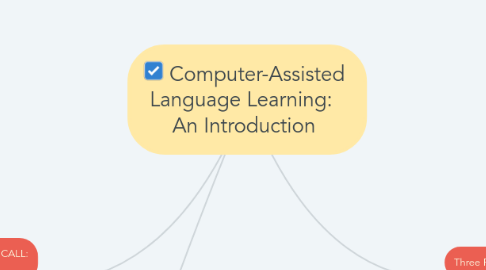
1. Steps toward Integrative CALL: Multimedia
1.1. multimedia computers and the Internet
1.1.1. Multimedia technology--exemplified today by the CD-ROM-- allows a variety of media (text, graphics, sound, animation, and video) to be accessed on a single machine
1.2. Steps toward Integrative CALL: The Internet
1.2.1. Computer-mediated communication (CMC), which has existed in primitive form since the 1960s but has only became wide-spread in the last five years, is probably the single computer application to date with the greatest impact on language teaching. For the first time, language learners can communicate directly, inexpensively, and conveniently with other learners or speakers of the target language 24 hours a day, from school, work, or home.Computer-mediated communication allows users to share not only brief messages, but also lengthy (formatted or unformatted) documents--thus facilitating collaborative writing--and also graphics, sounds, and video
2. Conclusion
2.1. can serve a variety of uses for language
2.2. teaching. It can be a tutor which offers language drills or skill practice; a stimulus for
2.3. discussion and interaction or a tool for writing and research it can also be a medium of global communication and a source of limitless authentic materials.
3. Three Phases of CALL
3.1. Behavioristic CALL
3.1.1. communicative CALL
3.1.1.1. integrative CALL
3.1.1.2. non-drill format
3.1.1.3. finding the right answer involves a fair amount of student choice, control, and interaction.
3.1.1.4. computer as tutor
3.1.1.5. computer as stimulus
3.1.1.6. computer as tool
3.1.2. drill and practice programs of the previous decade did not allow enough authentic communication to be of much value.
3.1.3. * focuses more on using forms rather than on the forms themselves; * teaches grammar implicitly rather than explicitly; * allows and encourages students to generate original utterances rather than just manipulate prefabricated language; * does not judge and evaluate everything the students nor reward them with congratulatory messages, lights, or bells; * avoids telling students they are wrong and is flexible to a variety of student responses; * uses the target language exclusively and creates an environment in which using the target language feels natural, both on and off the screen; and * will never try to do anything that a book can do just as well.
